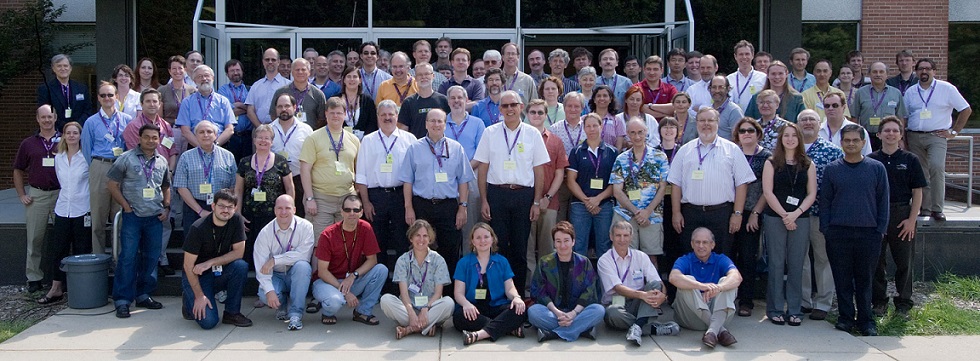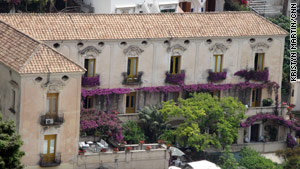Picture it: a long, relaxing stay in a thousand-year-old castle in Tuscany, drinking wine produced on an estate with ties to the real Mona Lisa, renting a boat for a tour of the Amalfi Coast.
These are some of the ways I was lucky enough to experience la Bella Italia during a recent journey with my family through Tuscany and the spectacular Amalfi Coast.
Here are five worthwhile splurges sure to enhance your next trip:
Stay in a Tuscan castle
Close your eyes and imagine the rolling hills and decadent wines of Tuscany. Now know that the reality of the place is even better. Twisted, knotted vineyards cover the rolling hills in patches of regimented rows that almost look like quilts. The air is fresh and sweet, and as you drive through the narrow curving roads, ancient towns and rustic old castles seem to pop up out of nowhere.
We rented a car for a more intimate look at the nooks and crests of Tuscany. Two things that made the visit all the more spectacular: our hotel and the wine.
Hotel Castello di Spaltenna is an ancient "castle" turned luxury hotel nestled in the vineyards of the Tuscan region of Chianti, close to the town of Gaiole. It's less an actual castle and more a medieval hamlet with a church that dates to the year 1000.
Three of us settled nicely into a two-bedroom suite with two bathrooms, a lovely living space and a fireplace for chilly nights. Staying here was a memorable splurge.
Our suite cost about €600 a night (about $870), but they have rooms available for around €200 (about $290) with breakfast included. Rates for simpler quarters on the premises can be as low as €130 a night (about $190).
The hotel has a Michelin-rated restaurant serving traditional Tuscan fare, but I was most taken with the early breakfasts on the terrace. Crispy, flaky croissants and tarts made by an in-house pastry chef, fresh scrambled eggs, yogurts, Italian meats, ripe fruit and fresh coffee complemented the roaring, lush summer just coming into full bloom.
The hotel also offers spa services, mountain bikes and suggestions for tours of the region.
Taste wine on a Chianti estate with ties to Mona Lisa
"I never drink when I am sober," joked Sandro Checcucci, our lively and thoroughly knowledgeable host at the Vignamaggio Estate in Chianti.
Sandro told us the 700-year-old estate has been making beautiful Chianti Classico wines for more than 600 years. But, he said, the vineyards have a much deeper past; they were cultivated by the Etruscans -- an ancient Tuscan civilization -- who made wine from the grapes grown on this land as far back as 500 B.C.
The castle itself has provenance as well. Vignamaggio Estate claims that Lisa Gherardini was born there in 1497. She would grow up into the mysterious woman immortalized in Leonardo da Vinci's "Mona Lisa." Guests can opt to stay in the estate's rooms and apartments.
Sandro was thorough in his tour, and we walked away with a real understanding of just what goes into making a true Chianti Classico wine. All wines labeled "Classico" come from grapes harvested, pressed and aged in a small 27-mile region in Chianti, the original growing region of Chianti wines.
The Vignamaggio Chianti Classico Riserva is a full-bodied wine with fruity notes. We lingered at a beautiful table set with regional salami and cheeses as we tried each of the estate's wines.
Take a private tour of Renaissance Florence
If you have a limited time in Florence, there is no better way to experience the essence of the Tuscan city than to hire a private tour guide.
Walks Inside Florence tailored a three-hour tour to exactly the likes and dislikes of my family. Hate art? No problem! Love architecture? Fine! Want a tour of the city at night? A-OK.
We started our tour early, before the swarm of tourists invaded Piazza della Signoria and the temperatures soared. It's a little more expensive than a group tour but totally worth it. The tour company also offers small group tours, starting at €60 per person (about $85) for three-hour expeditions.
Our guide had everything planned, so we breezed through museum lines and enjoyed the Ponte Vecchio, the Palazzo Vecchio, the Baptistry, the Cathedral and much more. Our guide pointed out little secrets and unknown tidbits along the way and made our excursion to Florence memorable.
Tour the Amalfi Coast by boat
There is absolutely no better way to see the raw beauty of the Amalfi Coast than from the sea.
We arranged a private boat and guide from Lucibello, an excursion outfit in Positano, and were simply stunned by what we saw.
Lucibello is an outfitter offering boat tours along the Amalfi Coast.
Rugged cliffs framing enormous caves ... ancient stairways carved into the stone ... secret grottos we explored from the water ... swimming holes where you can take a dip ... thousand-year-old Roman towers set up to protect the coast from pirates and other intruders.
Plan a longer excursion and stop off in a different coastal town for lunch, a swim or shopping.
Private boat excursions on the Amalfi Coast are definitely a luxury. Our four-hour tour of the Amalfi coast with a driver cost €450 (about $650). We could have spent close to $2,000 for a high-end speed boat for the day. Lucibello also offers much more affordable group tours every day, including a tour of the Amalfi Coast and round-trip excursions to nearby Capri starting around €30 (about $43) per person.
Stay in the summer palace of a king
Nestled in the elbow of the Amalfi Coast, Positano is a winding, ancient city built on ragged cliffs that drop straight down into the Tyrrhenian Sea.
The town is tiny, and in the beginning of June, it's covered in beautiful, delicate flowers that fill the air with a subtle fragrance. Lemon and orange trees line the streets and grow fruit the size of a human head.
Hotel Palazzo Murat was once the summer home of a king of Naples.
The cliffs were settled by prehistoric man and over thousands of years have been settled again and again by different cultures. Because of the proximity to Morocco, Algeria and Tunisia, there is a distinct Moorish influence throughout the coastal towns.
The Hotel Palazzo Murat is a gorgeous hotel built in the 17th century in a traditional Neapolitan Baroque style. The large stone palace sits close to the beachfront in Positano. Many rooms have balconies covered in bougainvillea that look out over the cliffs and the sea. In 1808, King of Naples Gioacchino Murat (who was also the brother-in-law of Napoleon Bonaparte) decided to make the palace his summer home.
His vibrant gardens still grace the grounds of the palazzo. There is also a vegetable garden that provides fresh produce for the hotel's Michelin-rated restaurant. Stroll through the patio area in the afternoon, and you might see the chef making homemade pasta for the evening's meal.
Breakfast in the courtyard includes a full buffet of fresh fruit, pastries, cheeses and meats. Cocktail hour outside in the early evening is complete with live music and hors d'oeuvres.
The rooms in the original palace have high ceilings and rich, old-world charm. Depending on the season, the most luxurious rooms could cost around €450 ($650). I stayed in a newer part of the hotel, where the rooms are spacious and charming with colorful tiled floors and flower-covered balconies overlooking the gardens. These "superior" rooms cost about €240 (about $350) in peak season, but prices drop dramatically in the fall.
Vacationing in Italy is unforgettable at every budget. And if you can afford a splurge to enhance an already spectacular experience, do it! But most importantly, take time to talk to the locals, sit for long spells with a glass of house wine and a nice view, eat as much as you can hold and share the experience with people you love.


